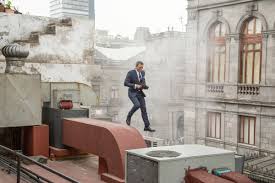LAST BUT NOT LEAST: Movie reviews of Selma and Big Eyes by Howard Casner
Posted: January 16, 2015 | Author: Donald | Filed under: Uncategorized | Tags: Amy Adams, Ava DuVerney, Big Eyes, Carmen Ejogo, Christoph Waltz, Danny Huston, DAvid Oyelowo, Jason Schwartzman, Krysten Ritter, Larry Karaszewski, Margaret Keane, Oprah Winfrey, Paul Webb, Scott Alexander, Selma, Terence Stamp, Tim Burton, Tim Roth, Tom Wilkinson | 6 Comments »First, a word from our sponsors. Ever wonder what a reader for a contest or agency thinks when he reads your screenplay? Check out my new e-book published on Amazon: Rantings and Ravings of a Screenplay Reader, including my series of essays, What I Learned Reading for Contests This Year, and my film reviews of 2013. Only $2.99. http://ow.ly/xN31r
Warning: SPOILERS
The title of these reviews is called Last But Not Least because Big Eyes and Selma are the final two movies I’m going to include under my 2014 reviews. After this, all films will fall under my 2015 reviews, no matter whether they were released in 2014 or not.
So off we go.
 The strongest aspect of Big Eyes, the new bio-com written by Scott Alexander and Larry Karaszewski and directed by Tim Burton, is the art direction and production design.
The strongest aspect of Big Eyes, the new bio-com written by Scott Alexander and Larry Karaszewski and directed by Tim Burton, is the art direction and production design.
Beginning in the 1950’s, the sets, the costumes, the look, the colors all have a poodle skirt playfulness about them that gives the movie some much needed energy.
This should probably be of no surprise since Burton has always had one of the more striking visual eyes in movies today, from Edward Scissorhands to Ed Wood to Alice in Wonderland. If nothing else, his films can be fun to watch.
But outside of that, there is almost nothing that works in this movie. Nothing, and almost amazingly so. Read the rest of this entry »
Movie Review of DJANGO UNCHAINED by Howard Casner
Posted: December 31, 2012 | Author: Donald | Filed under: Uncategorized | Tags: Christoph Waltz, Django Unchained, Franco Nero, James Remar, Jamie Foxx, Jonah Hill, Leonardo Di Caprio, Quentin Tarantino, Samuel L. Jackson, Walton Goggins | 11 Comments »I’m not sure I know what to make of writer/director Quentin Tarantino’s new spaghetti western/slavery pastiche, Django (as in jango with a hard “j”—the “D” is most pronouncedly silent) Unchained. However, I strongly suspect it may be genius.
Django… is in many ways a mirror image of Tarantino’s last film Inglourious Basterds, which was a giallo take on World War II films (there were times when I jokingly wondered whether Tarantino should consider suing himself for plagiarism). Neither is about what they are about. I mean, really, …Basterds is no more about Nazism and the Holocaust than Django… is about slavery. What they are both about is movies, and how many movies can Tarantino quote and pay homage to, and how brilliant a director Tarantino is, and how he can out post-modern any post-modern filmmaker.
At the same time, as in …Basterds, Tarantino takes his subject matter with a deathly seriousness. He doesn’t turn a blind, aesthetic eye to either Nazism or slavery. In fact, he, in many ways, proves the truth of that phrase, “more Catholic than the Catholics”. His view of slavery is probably the most gruesome, revolting and honest in any movie I may have seen. Though I do think his comments on the landmark TV miniseries Roots a bit too cavalier, in one way he has a point: his view of that institution is far more devastating and much harder to watch.
And I think it’s this approach that may be causing some people discomfort. In one way he trivializes his subject matter by making it subservient to his aesthetic approach: this is a post-modern spaghetti western before it is anything else. At the same time, he treats his subject matter with much more seriousness than people who treat it seriously. And it’s this aesthetic conflict that gives his movies their power: he makes highly entertaining movies about subjects that should not be entertaining. And what is worse, from his distracters’ viewpoints, he gets away with it. He not only gets away with it, he’s managed to make himself perhaps the most important and influential American director of his generation. It’s one thing to do something your rivals dislike; it’s another thing to do it better than your rivals. Failure is forgivable, success is not.
There are only two other filmmakers who I can think of who can also get away with what Tarantino does. The first are the Cohen Brothers who have also embraced the post modern approach creating movies which are often more a comment on the genre they are seriously parodying (in the true sense of the word) rather than using a purely straight approach in making their films. The second is Roberto Begnini who, I think I can safely say, is not post modern in any shape, form or matter. But he takes subject matter like organized crime, serial killers, the Holocaust and the American invasion of Iraq and sets them against the backdrop of a romance, usually a rom com.
So first and foremost Django… is a spaghetti western. It may be set against the U.S. south whereas a large number of the Italian ones are set against the Mexican revolution (with an anti-capitalist, pro-communist bent to them), but if it looks like a spaghetti western, sounds like a spaghetti western, and if it was in smellovision, would probably have the odor of a spaghetti western—well, draw your own conclusions. The sets and costumes are not what one would find in the fake West of a John Ford/Howard Hawks, but the fake West of a Sergio Leone/Sergio Corbucci. The music is often overloud and thunderous with a slight tinny sound to it here and there. The opening titles are tackily period. The cinematography betrays a certain cheap look to it at times (tres 1970’s). The only thing missing is the very bad dubbing no Italian film would be complete without.
Django… stars Christoph Waltz as a dentist/bounty hunter; Leonardo Di Caprio as a slow on the uptake slave owner; and Jamie Foxx in the title role, a freed slave who can understandably see the pleasure in killing white people and getting paid for it. Here again we sort of have …Basterds redux with Waltz playing the Brad Pitt role; Di Caprio playing the Waltz role; and Jamie Fox playing the Melanie Laurent role. The cast is filled out with what my friend called “the usual suspects” and I described as Tarantino phoning his casting director and telling him to call up every 1960’s and ‘70’s icon from small and large screen who no longer have a career to speak of and hire them (Don Johnson, Tom Wopat, Russ Tamblyn, Dennis Christopher, Don Stroud, Michael Parks-not quite the approach Spielberg used for Lincoln). There are also some nice turns by Samuel L. Jackson, James Remar, Jonah Hill and Walton, he with the Cheshire Cat smile, Goggins. In addition, keep a look out for the in-joke Franco Nero appearance.
Waltz and Di Caprio give turns that are often called bravura. Waltz savors every moment he has. It’s as if he told Tarantino, I don’t care how many pretentious lines and words you give me to say, I’m going to say each one of them as if I was eating an oyster. Di Caprio relishes his villain role as if to the plantation born. And Foxx does well in a role that is far less showy. The structure is a bit of catch as catch can. There’s an improv feel to it and Tarantino certainly doesn’t push the events as if a meteor was plummeting to earth. This is especially noticeable in an ending that has two climaxes a bit too close together. This same ending also suffers a bit because certain characters are conspicuously missing. But, as in …Basterds, it revels in an ahistoric revisionist revenge fantasy that is dynamite (pun intended). And more important, it’s never boring.
When the movie is over, one wonders what film genre, style, or aesthetic is left for Tarantino to appropriate for his own purposes. Where does he go from here? I believe even he wonders what is left for him and whether he has finally reached the end of his aesthetic sensibility. Personally, I’d love to see what he could do with a Bollywood musical. But only time will tell if post modernism is, in the end, a matter of diminishing returns for him.












